The colors of birds are very diverse and may be due to reasons such as species cooperating with each other, avoiding predators, or attracting mates of the opposite sex. At the same time, the colors of birds have different symbolic meanings and interpretations in different cultures and traditions. Do you know what red birds are in our country? This article introduces to you the most festive birds in my country - red birds. Red birds include blood sparrows, red-headed trogons, red pepperbirds, orioles, red-winged babblers, great rosefinch, and golden-eyed babblers. , white-capped brook robin, blue-throated sunbird, white-eared lovebird. So how many of these birds do you know? Let’s take a look!
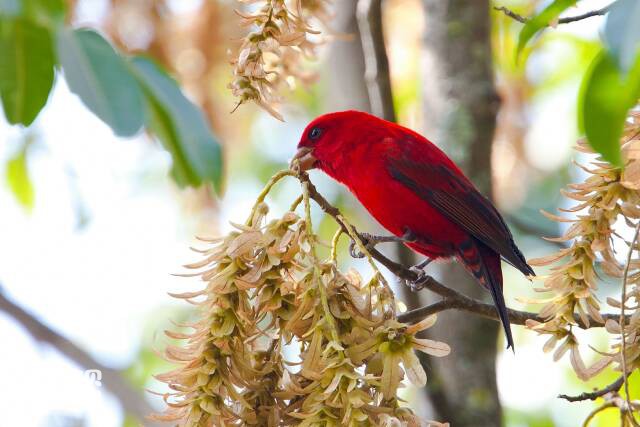
1. Blood Bird
The blood sparrow is an uncommon resident bird in my country and is found in southeastern Tibet, western and southern Yunnan. It inhabits evergreen forests or mature fir forests in mountains with an altitude of 1,600 to 3,400 meters. It is usually found in forest gaps or forest edges, and lives alone or in small groups. The beak is thick, and the male bird has a striking scarlet color all over its body. The flight feathers are black with red edges. The female bird has olive brown upperparts, yellow waist, and gray lowerparts with darker spots. The male young bird is like the female bird, but its upper body is brown and its waist is more orange. The iris is dark brown, the upper beak is pink-brown, the lower beak is horny yellow, and the feet are pink-brown. The blood sparrow is a beautiful ornamental bird. Because the number is too small, hunting should be strictly prohibited for protection.
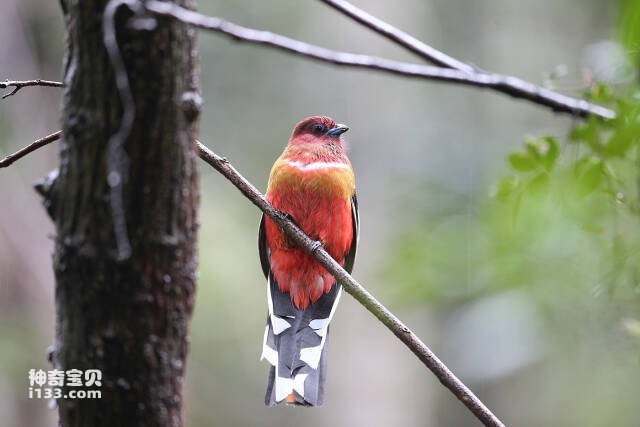
2. Red-headed Trogon
The red-headed trogon is 31-35 cm long. The body is mostly red, the body is large, the head is round and the tail is long. The male bird has a red head, a narrow half-moon-shaped white ring on the red chest, and a missing collar on the back; the female bird has a yellow-brown head, which is different from all other trogons. The red color of the chest and abdomen is not as bright as the male bird, and there is a half-moon-shaped white ring on the lower chest. . The iris is brown, the bare skin around the eyes is blue, the beak is almost blue, and the feet are pink. Domestically found in Southwest, Central China, South China and other regions. They like to stand alone or in pairs on low branches in dense forests and fly up from their perch to hunt for food. They are found in tropical and subtropical forest areas, up to 2,400 meters above sea level.
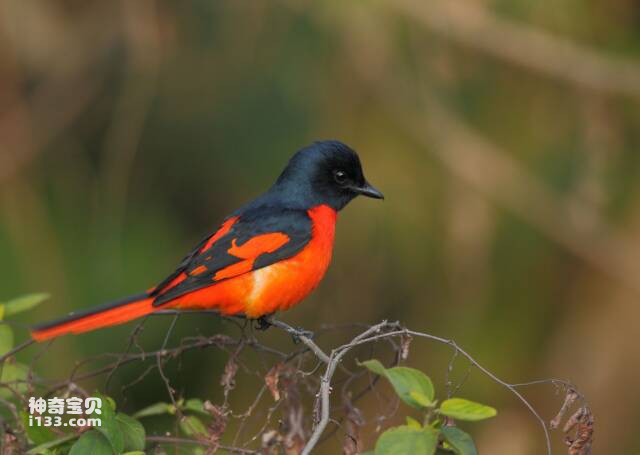
3. Red Mountain Pepper Bird
The common names of the Red Mountain Pepper Bird are Red Cross Bird and Vermilion Mountain Pepper Bird. The male bird is red and the female bird is yellow. The chest, abdomen, waist feathers, wing spots and tail feathers on both sides of the male bird are red, and the rest are blue-black, and the wing spots are "diao" shaped; the red part of the male bird appears yellow on the female bird, the top of the head to the upper back is gray, and the forehead and cheeks are orange. . Wing spots distinguish it from other mountain pepperbirds. The iris is dark brown, the beak is black, and the legs are black. Our country is distributed in southeastern Tibet, Yunnan, Guizhou, Hunan, Guangxi, Guangdong, Fujian and Hainan Island. They mostly inhabit broadleaf forests, rainforests and monsoon forests in hills and plains at medium and low altitudes. They are also found in mixed coniferous and broadleaf forests, coniferous forests and shrubs. During the non-breeding season, they often cluster in the canopy.
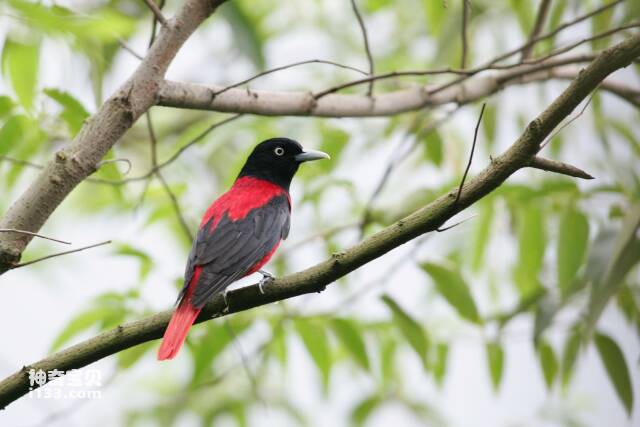
4. Oriole
The crested oriole is a medium-sized bird with a body length of 23-28 cm and mainly chestnut-red feathers. The male bird has a black head, neck and chest, black wings without wing spots, and chestnut red feathers on the rest of the body; the female bird has chestnut brown upper back, chest and tail coverts, and chestnut red rump, and white lower body with black vertical stripes, like a magpie-colored oriole. The female bird has darker upperparts. The iris is yellow-white, the beak is blue-gray, and the legs are lead-grey. Found in southeastern Tibet, eastern Yunnan, Hainan Island and Taiwan Island in my country. It inhabits a variety of habitats such as plains, hills, and mountain forests. It is found in various woodlands such as broadleaf forests, mixed forests, and coniferous forests. It is mostly active in the canopy.
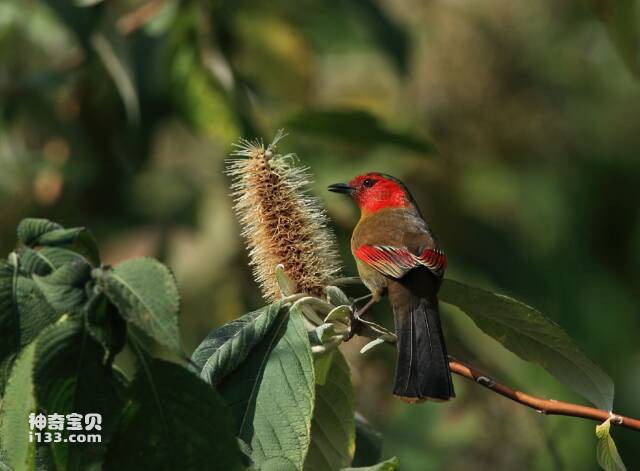
5. Red-winged Babbler
The red-winged babbler is the largest among the babblers. It has an olive-grey head, bright red from the face to the side of the neck, chin and upper throat. The rest of the body feathers are olive-green, with red and orange wing spots on both wings. The flight feathers have white edges and a tail. Square, the upper tail coverts are dark olive brown with thin black horizontal stripes, and the tail end is light brown. The iris is reddish brown, the beak is black, and the feet are gray. Found in the southwest, south and southeast of Yunnan in my country. It inhabits evergreen broad-leaved forests in mountains with medium and low altitudes. It is also found in secondary forests, artificial forests and forest edge shrubs. It lives alone or in small groups, forages in the middle and lower layers of vegetation, and sings softly.
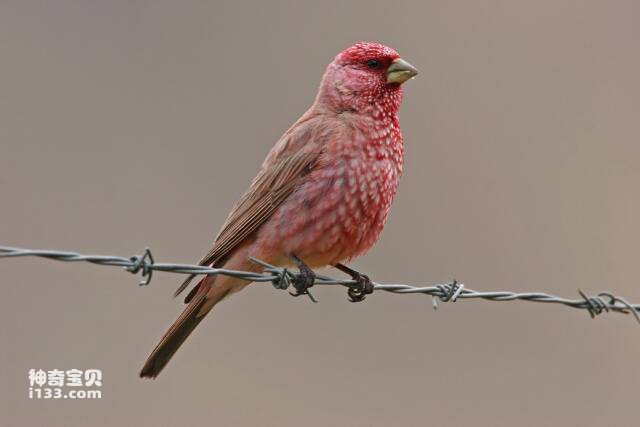
6. Big Suzaku
The Great Suzaku is larger and stronger than the common Suzaku, with a larger beak, longer wings and tail. Both male and female birds are similar to the Great Rosefinch. The difference between the two is that the male bird's forehead, face and upper chest are richer in red, the white spots are larger, and the overall color is more frosty white. The cheeks, nape, upper back and waist are single red. Or pink, with fewer vertical lines on the upper body. The lower body of the female bird has gray-yellow skin with dense vertical stripes, the upper back has sparse vertical stripes, and there are few vertical stripes on the nape and waist. Individuals distributed in Xinjiang and the northwest of the Qinghai-Tibet Plateau have very light colors. The iris is dark brown, the beak is horny yellow, and the legs are dark brown. Found in Xinjiang and the Qinghai-Tibet Plateau in China. In summer, it inhabits rocky flowstone beaches and alpine meadows above the tree line. In winter, it goes down to villages and fields, often mixing with other rosefinch.
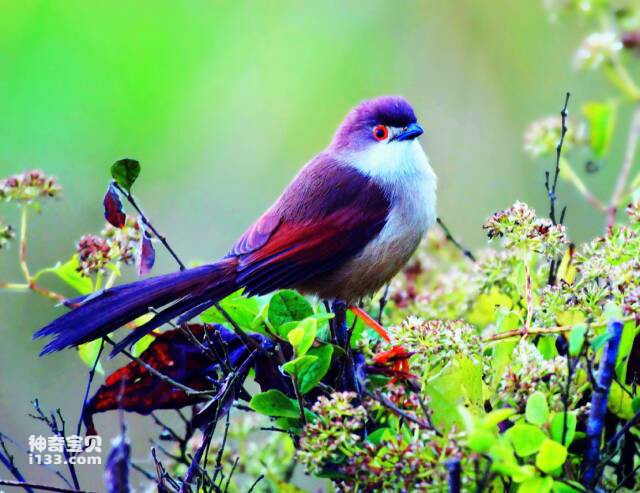
7. Golden-eyed Babbler
The golden-eyed babbler is a small bird of the family Warbleridae, with a body length of 16-20 cm. Its head, cheeks and entire upper body are brown, its wings are chestnut red, and it has short white eyebrow lines. Its lower cheek, chin, throat and entire lower body are white. , the flanks and lower tail coverts are dyed brown. Similar to the Baoxing Babbler but larger in size. The iris is yellow-white with obvious red eye circles, the beak is black, and the legs are orange-yellow. In my country, it is found in western, southwest, southern and southeastern Yunnan, central and southern Guizhou, western Guangxi and Guangdong. They mostly inhabit forest edges, wastelands, river valleys and bamboo forests in low-altitude mountains and plains, either alone or in pairs. They are also found in parks, farmland, nurseries and reed bushes. They are active in nature, have loud calls and are easy to find.
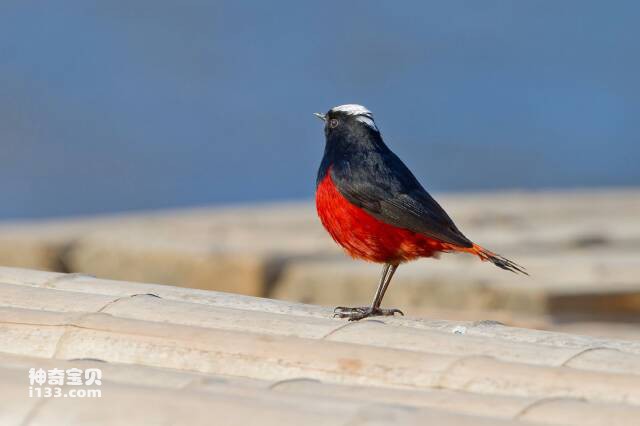
8. White-capped brook robin
The white-capped brook robin is larger in size. The male and female feathers are similar in color. The head, back, wings, chin, throat and chest are black. The top of the head to the back pillow is white. The tail base and upper tail coverts are red with black ends. The lower chest, abdomen and tail are white. The lower coverts are red. Similar to redstart but without white wing spots. The iris is black, the beak is black, and the feet are gray-black. It is found in southern Tibet, extreme western Xinjiang, Qinghai, Gansu, Ningxia, North China, East China, South China, and Southwest China. It is mostly found in mountainous areas with many streams and rivers. During the non-breeding season, some migrate to low latitudes or plains to overwinter. The wings are drooping, the tail is often upturned, and the song is thin and penetrating.
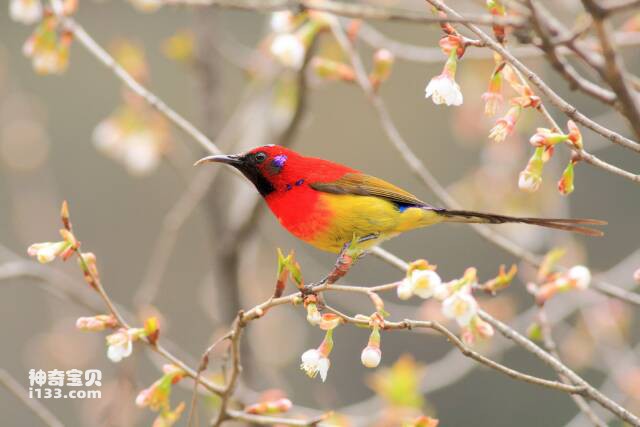
9. Blue-throated Sunbird
The blue-throated sunbird is slightly larger and has a long, curved bill. The feathers on the male's head, eye stripes and chin are bright purple-blue fish scales, the rest of the head to the upper back is scarlet, the flight feathers are olive, the waist is yellow, the tail is blue and extended, and the chest is lighter scarlet. It gradually changes to bright yellow downwards. Individuals distributed in the Himalayas have less red breasts and are only striped. The female bird has olive upper body, greenish yellow lower body, and smoky olive chin and throat. The iris is brown, the beak is black, and the feet are brown. It is distributed in the southwestern region of my country and is commonly found in mountainous evergreen forests at an altitude of 1,200 to 4,300 meters. In spring, it often mixes with other birds to feed in rhododendron bushes. In summer, it is active in rubus and other berry bushes, and migrates down in winter.
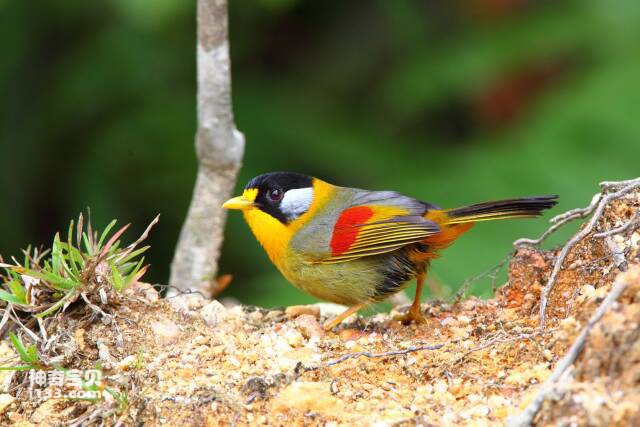
10. Tremella Lovebird
The body length of the white-eared lovebird is 15.5-17 cm. The head is black with silver-white ear feathers, the forehead has bright yellow feathers, the chin, throat, chest, back neck and upper abdomen are orange-red, the upper back is dark olive gray, the flight feathers on both wings have bright red to bright yellow patches, and the waist is brownish red. , the flanks and lower abdomen are dyed gray, the rump feathers are red, the tail feathers are gray-black, the outer tail feathers are yellow or red, the tail feathers are square and the bifurcation is not obvious, which is different from the red-billed lovebird. The iris is reddish brown, the beak is orange, and the legs are orange to pinkish brown. Domestically found in Yunnan, Guizhou, Guangxi, and southeastern Tibet. They mostly inhabit alone or in small groups in evergreen broad-leaved forests, secondary shrubs and forest edges at medium and low altitudes. They are also found in nurseries, orchards and parks. They are active in the middle and lower layers of vegetation. They are lively and not afraid of people. They often look for food. Eats on the surface.
The above ten kinds of red birds are mainly compiled based on relevant information, and are comprehensively ranked and recommended. They are for reference only. If you have any questions, please leave comments/criticisms at the end.
animal tags:
We created this article in conjunction with AI technology, then made sure it was fact-checked and edited by a Animals Top editor.